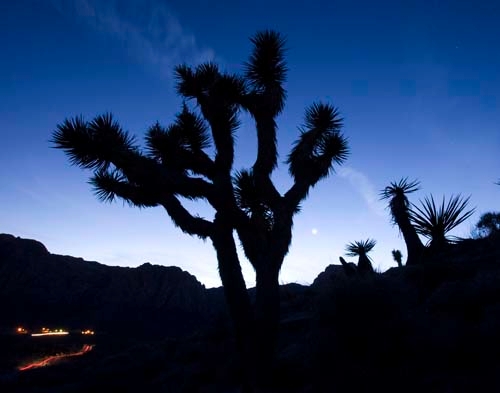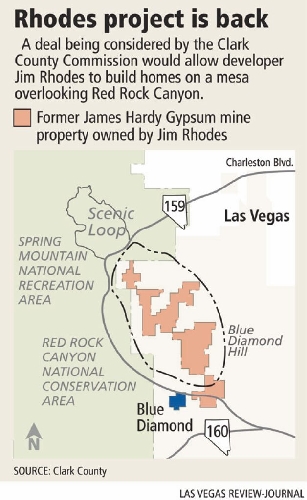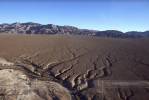Rhodes rides again at Red Rock
Hikers, climbers and nature lovers someday could see hundreds of homes in addition to the deep red cliffs, jutting mountain pinnacles and Joshua tree-filled landscape when they visit Red Rock Canyon after Clark County Commission action Wednesday.
Taking the advice of legal counsel, commissioners introduced a code that would allow Jim Rhodes to develop about 1,700 acres on a mesa overlooking the Red Rock National Conservation Area.
Although no public hearing will be held until April 21 -- and residents were not allowed to voice their opinions at Wednesday's meeting -- the proposal that brought widespread opposition when it was first unveiled in 2005 is already generating strong criticism of the commission for reviving a project that neighbors, conservationists and outdoor enthusiasts thought was dead.
"This whole thing smells," said Evan Blythin, a Blue Diamond resident and citizens' advisory panel member. "There is no reason for the county to be doing this. Why are they chickening out now?"
County officials have been locked in a legal battle with Rhodes since 2005, when he sought to build 5,500 homes on a former gypsum mining site atop Blue Diamond Hill.
Attorneys on both sides said a recent compromise will avoid wrangling in federal court, give the county some control over what Rhodes builds and keep development from encroaching on Red Rock.
"The only thing this does is it settles the lawsuit and allows him to apply for a project," said attorney Christopher Kaempfer, who represents Rhodes. "And it protects Red Rock."
Though Rhodes has filed for bankruptcy protection, he aims to develop the land, Kaempfer said.
Kaempfer said that as far as he knows, Rhodes will not have to sell the land to pay creditors. Rhodes has $400 million in liabilities, according to one report.
In 2003, the county passed a code barring developments that intruded visually on Red Rock. The state enacted a law that mirrored the Red Rock restrictions. The rules were aimed at preventing Rhodes from pursuing his project.
But Rhodes filed a lawsuit, claiming the restrictions were unconstitutional. And last year, a federal judge ruled in his favor, saying the state must impose laws that apply throughout Nevada, and not just a specific area like Red Rock. The state has appealed the ruling.
Armed with this victory, Rhodes was set to challenge the county in federal court in May.
Deputy District Attorney Robert Warhola said it's logical to assume the court would treat the county's case the same as the state's case.
For that reason, he met with Rhodes' attorneys to work out a deal, Warhola said.
Under the agreement, the county would make a few exceptions to the normal Red Rock restrictions, he said. These would be "major projects," tracts at least 700 acres in size.
Commissioners would decide how many homes could be built on the 1,700 acres, but Rhodes is seeking density higher than the county originally approved at one home per every two acres.
To make the higher density more palatable, his remaining 700 acres, including the land abutting Red Rock, would remain vacant.
If the county were to lose in court, Rhodes would be freed of all the zoning restrictions, allowing him to build high-density housing next to Red Rock, Warhola said.
The county also could be on the hook for all of Rhodes' legal costs, which could add up to $1 million, Warhola said.
Still, his arguments did not satisfy Blythin, who said that the county has won some legal skirmishes with Rhodes.
Even if the county were to lose this lawsuit, commissioners still would decide what gets built on Rhodes' land, he said. The county should at least wait until the state's appeal runs its course, he said.
"It's not that our particular lifestyle is going to be ruined," Blythin said. "It's that he (Rhodes) is going to ruin one of the greatest monuments in the world. It will be a visual eyesore."
But Bill Johnson, a hiking organizer and real estate agent, disagreed.
Rhodes' land is scarred from the years it was mined, and building houses there would improve it, Johnson said.
And the site is tucked behind mesas that would make the homes barely noticeable from the park, he said.
"No, it wouldn't ruin the experience," Johnson said. "But I'm kind of biased in favor of development."
Lisa Mayo DeRiso, a business consultant and neighborhood advocate, said the site has many logistical problems.
For instance, water would have to be piped uphill, she said. Also, electrical cables would have to be buried in the rugged terrain or strung overhead, creating visual pollution
"It's not by a lot of people's standards a compatible use of a conservation area," DeRiso said. "People are mad. We thought we handled this."
Alan Gegax, who heads a local hiking group, said he would have no problem with houses being built on the scarred land if they didn't extend into the recreation area and hurt wildlife.
Still, he questioned why the government is so lax with developers while limiting the size of hiking groups.
"If a group of 12 creates an environmental hazard, what does a subdivision do?" Gegax said.
Contact reporter Scott Wyland at swyland@reviewjournal.com or 702-455-4519.





























